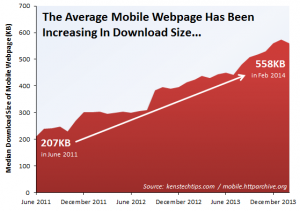In the last few years, web pages and apps have ballooned in size. In 2014, how many gigabytes of data do you actually need?
 One of the most common questions I’m asked by readers of the blog is how much data they need when choosing a new smartphone tariff. Many people get bamboozled by the large choice of data allowances: you can now choose a tariff with everything from 100MB to 50GB of data. There’s also a couple of unlimited data deals from Three, giffgaff and T-Mobile.
One of the most common questions I’m asked by readers of the blog is how much data they need when choosing a new smartphone tariff. Many people get bamboozled by the large choice of data allowances: you can now choose a tariff with everything from 100MB to 50GB of data. There’s also a couple of unlimited data deals from Three, giffgaff and T-Mobile.
With the introduction of 4G, things have intensified in the area of mobile download allowances. Whereas 500MB per month used to be a standard data offering, 4G mobile tariffs are now widely differentiated in the amount of included mobile data. On their 4G plans, EE offers between 500MB and 50GB of data. O2 offers between 1GB and 8GB per month whereas Vodafone offers between 3GB and 9GB. On the three networks, calling and texting is now free and unlimited on most 4G Pay Monthly tariffs. Three is the sole network offering all-you-can-eat data with 4G on most of their price plans.
With download allowances becoming the next big battleground, I wanted to revisit the topic and to look at how much data is required in 2014. In the summer of 2010, Ken’s Tech Tips produced the first version of our mobile data guide. Back then, we looked at the meaning of 500MB and 1GB allowances. We gave a rough estimate of how many web pages you were able to view using your allowance. Although the guide has been updated several times, it’s now time for a radical overhaul. In this article, I’ll discuss my most recent findings. It’s a little bit technical but hopefully it’ll give some background on how our data estimates are calculated.
